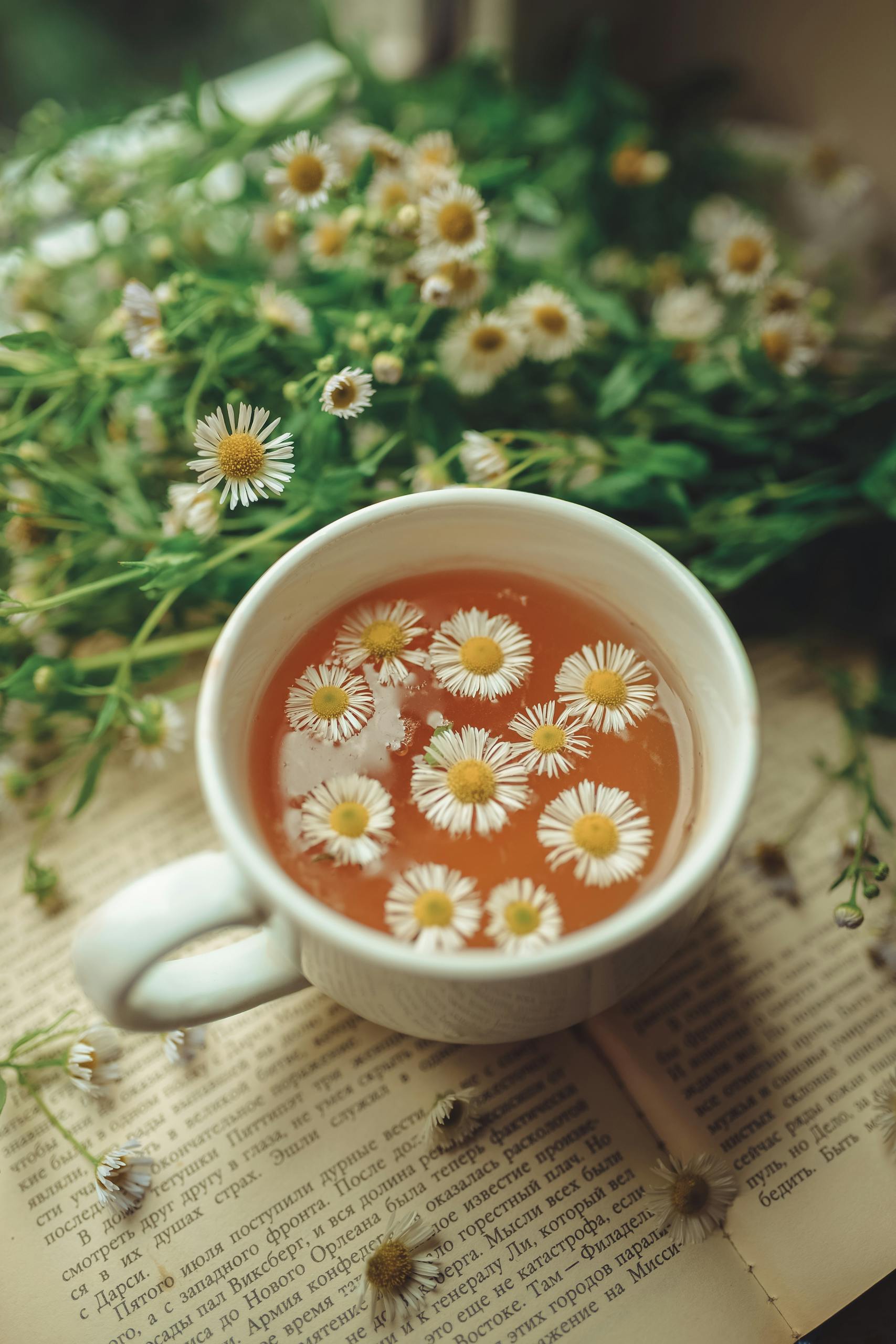Organic Chamomile from Nepal: Calm for You & the Earth
Grown in the clean mountain air of Nepal, organic chamomile is nature’s gentle healer. Known for its calming effects, it helps reduce stress, aid sleep, and soothe digestion—all without harmful chemical residues.
Choosing organic ensures farmers avoid synthetic pesticides and fertilizers, protecting local water sources and soil health. In Nepal, traditional farming methods support biodiversity and sustainable livelihoods.
Why Organic Chamomile Matters:
- Pesticide-free for safer daily use
- Better for pollinators and ecosystems
- Supports small-scale Nepali farmers
From your cup to the environment, organic chamomile brings peace the natural way.
Environmental Benefits of Organic Chamomile Farming
Choosing organic chamomile doesn’t just benefit individual health—it also supports the health of our planet.
- Soil Health Preservation Organic farming avoids synthetic chemicals that degrade soil quality over time. Practices like crop rotation, composting, and mulching maintain fertile, living soil ecosystems.
- Water Conservation and Protection Organic farms typically use less water and avoid contaminating nearby water sources with runoff from synthetic fertilizers and pesticides. Cleaner waterways support healthier aquatic life and communities downstream.
- Biodiversity Support Organic farms foster diverse habitats by avoiding monoculture and supporting pollinators like bees and butterflies. Chamomile, being a flowering plant, is particularly beneficial for pollinators when grown without harmful agrochemicals.
- Carbon Sequestration and Climate Mitigation Organic farming methods tend to store more carbon in the soil through practices like cover cropping and reduced tillage, helping to combat climate change.
- Supports Sustainable Livelihoods Organic certification often comes with fair trade practices, ensuring that farmers receive fair wages and work under safe conditions. It promotes long-term sustainability in rural communities.
Organic vs. Non-Organic Chamomile: What’s the Difference?
While both organic and non-organic chamomile offer similar basic medicinal properties, the differences lie in purity, potency, and impact.
| Pesticide Use | None | Often treated with synthetic pesticides |
| Soil Quality | Enriched naturally | May degrade due to chemical overuse |
| Nutrient Content | Higher due to healthy soil | Potentially lower |
| Environmental Impact | Positive (supports biodiversity, reduces pollution) | Negative (soil degradation, water contamination) |
| Human Health Risk | Minimal | Potential residue exposure |
In essence, non-organic chamomile may still provide some therapeutic value, but it risks introducing toxins into your body and the environment. For those using chamomile regularly—especially for wellness purposes—the cleaner, purer source offered by organic farming is clearly superior.
Conclusion: A Simple Choice with Far-Reaching Effects
Organic chamomile represents more than just a cup of tea—it’s a conscious step toward better health and a healthier planet. By choosing organic, consumers support sustainable agriculture, protect ecosystems, and enjoy a more potent, chemical-free herbal remedy.
Whether you’re sipping chamomile to unwind after a long day or applying it to soothe irritated skin, remember: the power of chamomile lies not only in its delicate blossoms but in how it’s grown. Choosing organic ensures that every petal brings peace—not just to your body, but to the Earth too.

